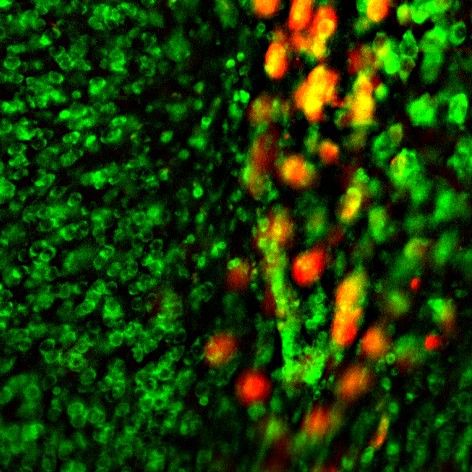Cognition and Behavior
New behavioral method may improve understanding of complex working memory in nonhuman primates.
Coronal section of a mouse nucleus accumbens with GABAergic neurons ablated.
Kamilla Haugland shares how her passion for research, love of learning, and work ethic helped her overcome difficult challenges—including multiple lab closures—as she pursues her dream of leading her own research group.
Looking back at ten years of eNeuro papers, this post features two papers published in 2020.
Dr. Samantha White details how her academic trajectory, though challenging on both technical and personal levels, has ultimately fostered her passion for neuroscience research and led her to pursue an academic career.
Looking back at ten years of eNeuro papers, this post features two papers published in 2018.
Prelimbic and infralimbic cortices balance their activity to regulate safety learning during a novel behavioral task that uses ethologically-relevant stimuli.
While discussing their co-first author paper about the discrete influences of food restriction and reinforcement schedules on reward-related behaviors, Dr. Maxime Chevée and Ms. Courtney Kim highlight how their mentor-mentee relationship in Dr. Erin Calipari’s lab positively impacted their futures.
Microsaccades, or small involuntary eye movements, provide information about object location during memory rehearsal.
Dr. Kathleen Bryant tells the story of her journey in the alcohol research field and discusses the surprising findings in her recent first author publication from Dr. Jacqueline Barker’s lab at Drexel University, where she obtained her doctoral degree.
FOLLOW US
TAGS
CATEGORIES







 RSS Feed
RSS Feed




